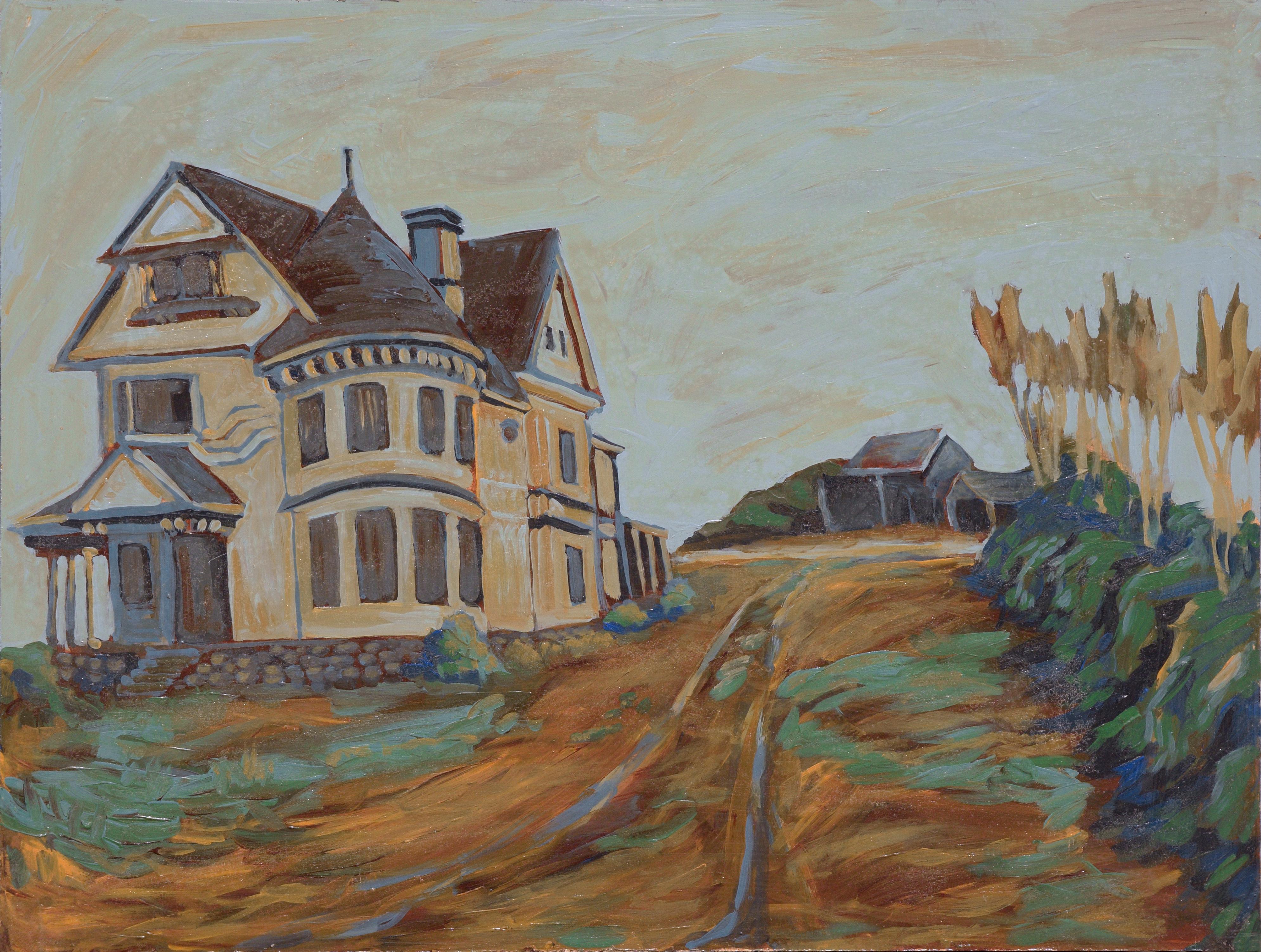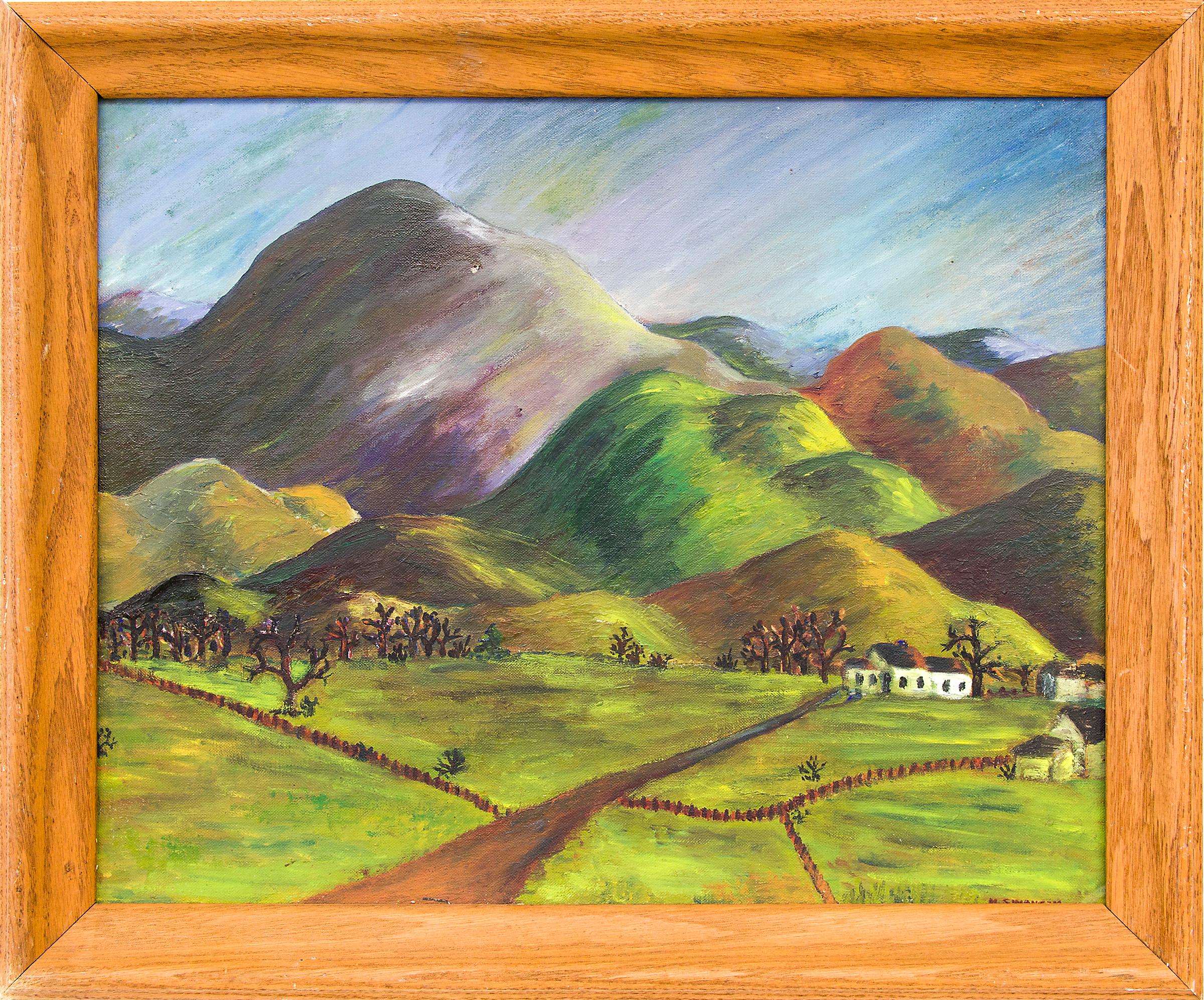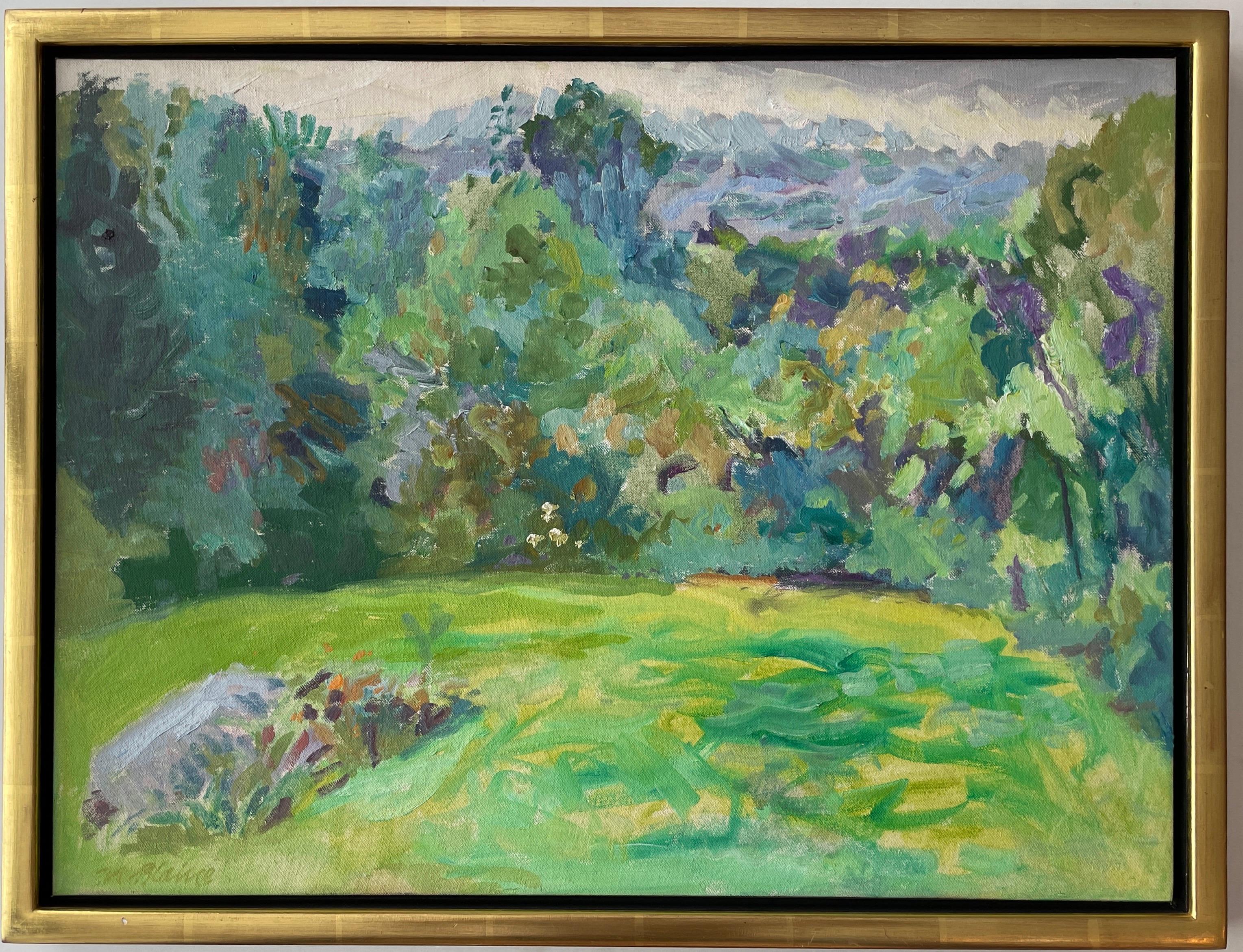William Merritt PostAutumn Landscape
About the Item
- Creator:William Merritt Post (1856 - 1935, American)
- Dimensions:Height: 10 in (25.4 cm)Width: 14 in (35.56 cm)Depth: 2 in (5.08 cm)
- Medium:
- Movement & Style:
- Period:
- Condition:
- Gallery Location:Saratoga Springs, NY
- Reference Number:1stDibs: LU170212937922
William Merritt Post
William Merritt Post was born in 1856 in Brooklyn, New York. As the son of a commodities merchant, his parents separated after 16 years of marriage and four children. Post developed his eye for composition, his technical knowledge of the craft of painting and his deft draftsmanship in the artistic community of New York. At the age of 24, he began taking drawing lessons from Samuel Frost Johnson and by 1880, Post had already begun painting Hudson River pictures on academic boards and signing them W. Post. By 1881–82, he moved on to the Art Students League, where he worked with J. Carroll Beckwith. Paintings during this phase were signed W. M. Post and by the age of 28 in 1884, Post had launched his career as a landscapist. That same year, the National Academy of Design accepted for its autumn exhibition one of his paintings signed W. Merritt Post. This remained his signature for the rest of his professional life. It was in these years that he became greatly influenced by the landscape painter, Hugh Bolton Jones. Both of them were attracted to tightly focused landscape scenes, particularly streams amid trees and meadows, and their primary goal was to capture light at different times of the day and in different seasons. This predilection, in turn, drove both artists to excursions outside of New York into the countryside of the marsh towns in New Jersey and on Long Island, especially in the marsh areas of Milburn, South Orange and Nutley. By the 1890s, Post perfected the country stream motif and the evident profitability of these paintings so he became financially independent of his father, being this of great significance for the artist that kept the interpretation of this theme for the rest of his life. Post exhibited continually at the National Academy of Design, the Philadelphia Academy of Fine Arts as well as the Boston Museum of Fine Arts. He also exhibited in Buffalo, Chicago, St. Louis and the Corcoran Gallery of Art in Washington DC, receiving many awards. As an American artist that was making a living from his art, in 1906 at the age of 49, Post married his wife, Katherine Van Nest, who was 36 at that time. The Post’s summered in Bethlehem, Connecticut around 1908 becoming noted for his landscape paintings done there. Also, he was an active member of the two watercolor clubs that had been established in New York City. Post was later elected an associate member of the National Academy of Design in 1910. In 1912, they purchased a farm in West Morris (Bantam) 15 miles northwest of Waterbury. With the help of New York architects, the Posts completely remodeled the place adding a studio addition in the process. The Bantam River ran westerly at the back of the property. After settling in his West Morris studio, Post began painting Plein-air landscapes, and traveled throughout the northeast, collecting landscape motifs in his sketchbooks. He became fascinated with country streams and reflections on water, and concentrated on these themes all of his professional life, showing a steady exploration of this country stream theme. Remaining committed to tonalist hues and the rich greens that also appealed to his mentor, Hugh Bolton Jones. Post moved back with his wife to Manhattan at the age of 70 to be close to their daughter. About 1930, Post's started to offer two paintings at the National Academy of Design annual exhibitions, and this was later reduced to one painting per year. Post died in 1935 in New York City at the age of 78. The contents of his studio in West Morris were auctioned off in 1937, and the estate holder donated many items to the Mattatuck Museum, including drawings, sketchbooks, small oil paintings, documents, and artists' materials.
- ShippingRetrieving quote...Ships From: Saratoga Springs, NY
- Return PolicyA return for this item may be initiated within 3 days of delivery.
- Gramacy Army Plaza Brooklyn NYBy Johann Berthelsen, 1883-1972Located in Saratoga Springs, NYSigned lower right. Following his graduation, he toured the United States and Canada as lead baritone for the Grand Opera Company, after which he taught voice - first as his alma matter...Category
Mid-20th Century American Impressionist Landscape Paintings
MaterialsOil, Board
- New York HarborBy Guy WigginsLocated in Saratoga Springs, NYSigned lower right. Guy Carleton Wiggins adopted the bright palette and lively brushwork of the impressionist movement, and is best known for his New York City snow scenes...Category
Mid-20th Century American Impressionist Landscape Paintings
MaterialsOil, Canvas
- High Bridge, New YorkBy Arthur Clifton GoodwinLocated in Saratoga Springs, NYSigned lower right. Bio: A painter especially known for street and waterfront scenes of Boston, Arthur Clifton Goodwin did work that captured the subtle nuances of light and color, ...Category
Early 20th Century American Impressionist Landscape Paintings
MaterialsOil, Canvas
- The Red House, Cornwall, ConnecticutBy Charles Warren EatonLocated in Saratoga Springs, NYSigned lower left. Born in Albany, New York, Charles Eaton became a Tonalist landscape painter much influenced by George Inness. His intimate, moody landscapes were known for subdued golden-brown hues and muted tonal harmonies, and the subject was often the landscape in late autumn, evening time, or winter. These paintings were groundbreaking because they were relatively small in scale and intimate countryside views, which was a departure from the generally popular panoramic, romanticized views of Hudson River School painters. In 1879, he enrolled at the National Academy of Design in New York City and then studied figure painting at the Art Students League with J. Carroll Beckwith. He became a close associate with Leonard Ochtman and Ben Foster...Category
Mid-20th Century American Impressionist Landscape Paintings
MaterialsOil, Canvas
- Wall Street New YorkBy Gail Sherman CorbettLocated in Saratoga Springs, NYSigned lower right.Category
Mid-20th Century American Impressionist Figurative Paintings
MaterialsOil, Canvas
- Sampans on the Seine River, ParisBy Jules PagesLocated in Saratoga Springs, NYSigned lower right. A prominent landscape and marine painter, Jules Eugène Pages spent most of his career in France where he was a well-known Impressionist painter, but he mainta...Category
Early 1900s Impressionist Landscape Paintings
MaterialsOil, Board
- Gray Day, GloucesterBy Winfield Scott ClimeLocated in Milford, NHA fine impressionist North Shore Cape Ann coastal oil painting by American artist Winfield Scott Clime (1881-1958). Clime was born in Philadelphia, studied at the Corcoran Art School...Category
Early 20th Century American Impressionist Landscape Paintings
MaterialsOil, Board
- Mid Century Autumn Bay Area Mountains LandscapeLocated in Soquel, CABeautiful plein air painting of Bay Area mountains in autumn by Charles Eades (American, 1949-2009) circa 1965. Signed lower left corner "Chas. Eades." Unframed. Image 18"H x 24"W. ...Category
1960s American Impressionist Landscape Paintings
MaterialsCanvas, Oil, Cardboard
- "The Redman House, Watsonville", Historical California Architectural LandscapeLocated in Soquel, CABeautiful contemporary impressionist depiction of the historical Redman House in Watsonville, CA, by an unknown artist (20th Century). Titled "The Redman House Watsonville", dated "11/22/06" and initialed (illegible) on verso in pencil. No frame. Redman Hirahara Farmstead is a complex including a historic house designed by William Weeks (1897) and a vernacular barn in the Pajaro Valley, south of Watsonville, California. A Japanese American owned farm which was maintained by local citizens during the internment of Japanese Americans in World War II and was returned to the Hirahara family after the war, it is on the National Register of Historic Places. The barn included a living unit...Category
Early 2000s American Impressionist Landscape Paintings
MaterialsFiberboard, Oil
- Hilltop Trail Landscape by Ken LucasBy Kenneth LucasLocated in Soquel, CAA small, winding trail invites the viewer into this beautiful verdant landscape by California artist Ken Lucas (American, 20th Century). Signed "Ken Lucas" o...Category
1990s American Impressionist Landscape Paintings
MaterialsCanvas, Oil, Illustration Board
- Gunnison, Colorado 1940s Modernist Mountain Landscape Painting, Green, Blue, RedLocated in Denver, CO1940s modernist mountain landscape painting, near Gunnison, Colorado with a white farmhouse and out buldings and trees in a meadow/valley with mountains in the background. Painted in...Category
1940s American Impressionist Landscape Paintings
MaterialsBoard, Oil
- Summer, Quaker Hill oil painting by Nell BlaineBy Nell BlaineLocated in Hudson, NYThis work by Nell Blaine was exhibited at the Poindexter Gallery, as well as the Tibor de Nagy Gallery, both in New York City. It is signed lower left, and signed, titled, and dated ...Category
1960s American Impressionist Landscape Paintings
MaterialsOil, Board





